There’s a common belief that larger dogs, like the Great Dane and the German Shepherd, are a lot smarter than small-sized dogs. But that would be a generalization if we assumed owning a Great Dane or a German Shepherd is the same. So, if we place them on a canine breed comparison scale, Great Dane vs. German Shepherd – which breed is right for you?
The German Shepherd is a much smarter dog in training and has a softer heart for kids than the Great Dane. However, both breeds share many other wins for a friendly personality and graceful physical features and abilities. Both have similar care needs in nutrition, exercise, health, and grooming.
If you want to determine which between the Great Dane and the GSD is the best dog for you, a thorough assessment of the differences and similarities between the two breeds will help you choose.
This article has all you need to make that decision. But, before comparing the two dogs to see who is the best match, a breed comparison will interest you.
Here we go!
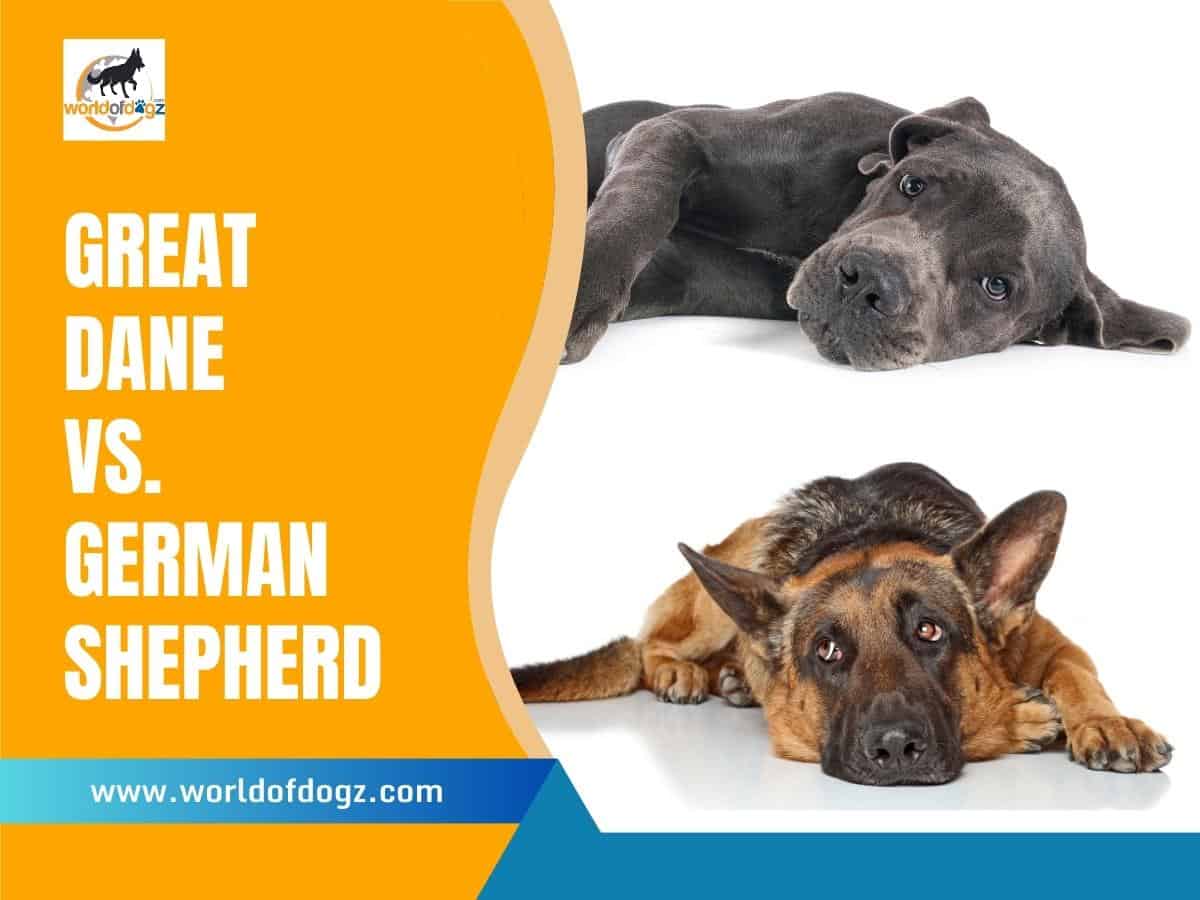
Breed Comparison
Are you trying to decide between a Great Dane and a German Shepherd as your next furry companion? These two breeds have distinct personalities, sizes, and exercise needs, so it’s important to do your research and choose the one that’s the best fit for your lifestyle.
To help you compare these breeds side-by-side, I’ve put together a table highlighting some of their key traits and characteristics.
| Trait/Characteristic | Great Dane | German Shepherd |
|---|---|---|
| Size | Very large (up to 32 inches at the shoulder, 175 pounds) | Large (up to 26 inches at the shoulder, 95 pounds) |
| Coat | Short, smooth, and glossy | Medium-length, thick, and double-coated |
| Shedding | Moderate | Heavy |
| Health Concerns | Bloat, hip dysplasia, heart disease | Hip dysplasia, elbow dysplasia, bloat |
| Temperament | Friendly, patient, and good-natured | Loyal, protective, and confident |
| Trainability | Somewhat stubborn, but generally eager to please | Intelligent and highly trainable |
| Exercise Needs | Moderate (daily walks and playtime) | High (daily exercise and mental stimulation) |
| Living Conditions | Can adapt to apartment living with enough exercise | Needs plenty of space and exercise |
| Compatibility with Kids | Generally good with children | Generally good with children |
| Compatibility with Other Pets | Generally good with other pets, but may have a high prey drive | Can be trained to coexist peacefully with other pets |
| Life Expectancy | 6-8 years | 7-10 years |
Remember, every dog is unique and may have different personalities, so choosing a breed that’s a good fit for you is important. While this table doesn’t cover every difference between Great Danes and German Shepherds, it does provide a helpful snapshot of some of their key traits and characteristics.
So whether you’re looking for a loyal protector or a gentle giant, let’s take a closer look at these two breeds and see which one captures your heart, starting with the breed history.
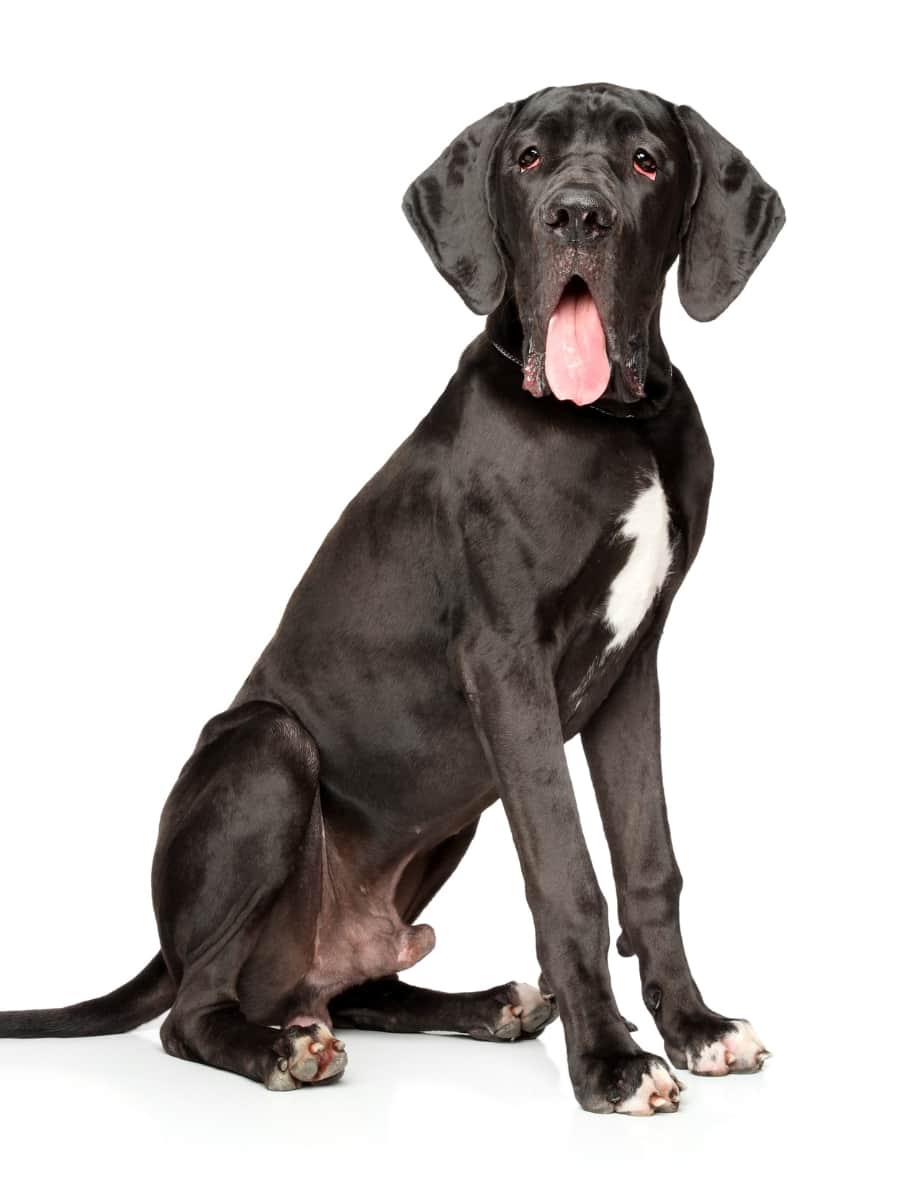
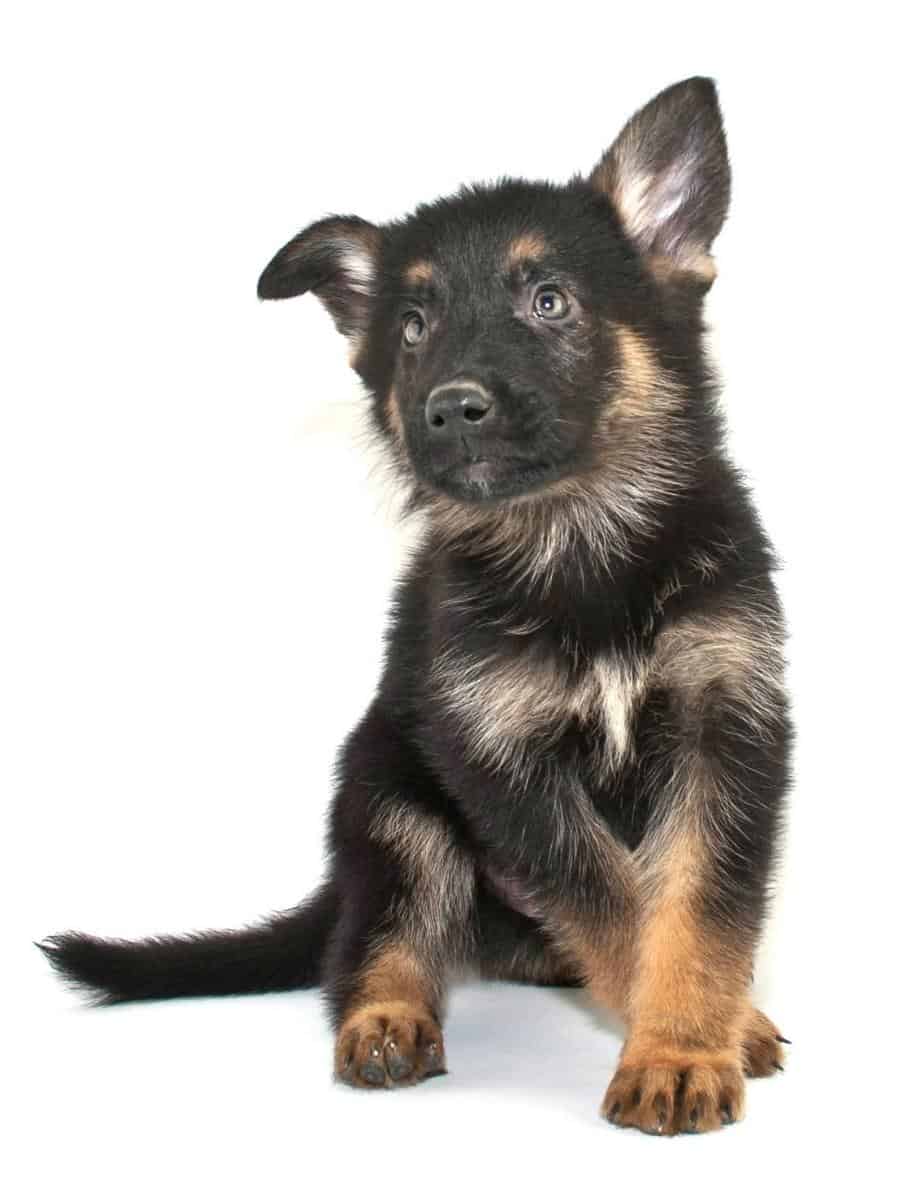
Origins and Breeding Purpose
Great Danes and the German Shepherds have German origins. But a perfect match in similarity ends right there.
Despite their name, Great Danes are not Danish, and their association with Denmark comes from the English term of one of the breed’s former names used in France, “Grand Danois” which translates to “Big Danish.”
At some point in history, Alsatian replaced the German Shepherd, especially in the UK. The change was probably an attempt to conceal the mighty and popular Shepherd’s German origins. Alsatian comes from Alsace-Lorraine, a German-French border point where the British and Germans had a ferocious battle.
“Germans bred the German Shepherd as a herding dog but designated the Great Dane a hunting role.”
Today, people associate both breeds with excellence in guarding, although the German Shepherd has better fame as a K9. Most significantly, though, Great Danes and German Shepherds are gentle, loving, and loyal family dogs, which is most likely what you want them to be when you own one.
So, to help you out, I compare the German Shepherd and the Great Dane in these and other characteristics. Hopefully, you know which is the better dog for you by the time you finish reading the article.
Great Dane vs. German Shepherd
We can use numerous traits and characteristics to place the Great Dane and the German Shepherd on the breeds’ scale. Here, I focus on the 6 most important ones for any dog owner:
- Size
- Looks
- Trainability
- Personality
- Care needs
- Health and lifespan
If you are super curious about how the comparison battle between the two breeds will end, the summary below is a quick idea.
| Trait | Who Is Better? |
|---|---|
| Size | A tie |
| Looks | A tie |
| Personality | German Shepherd |
| Trainability | German Shepherd |
| Care | A tie |
| Health and lifespan | A tie |
And now that you know the German Shepherd has the upper hand over the Great Dane, read on to discover why.
Size

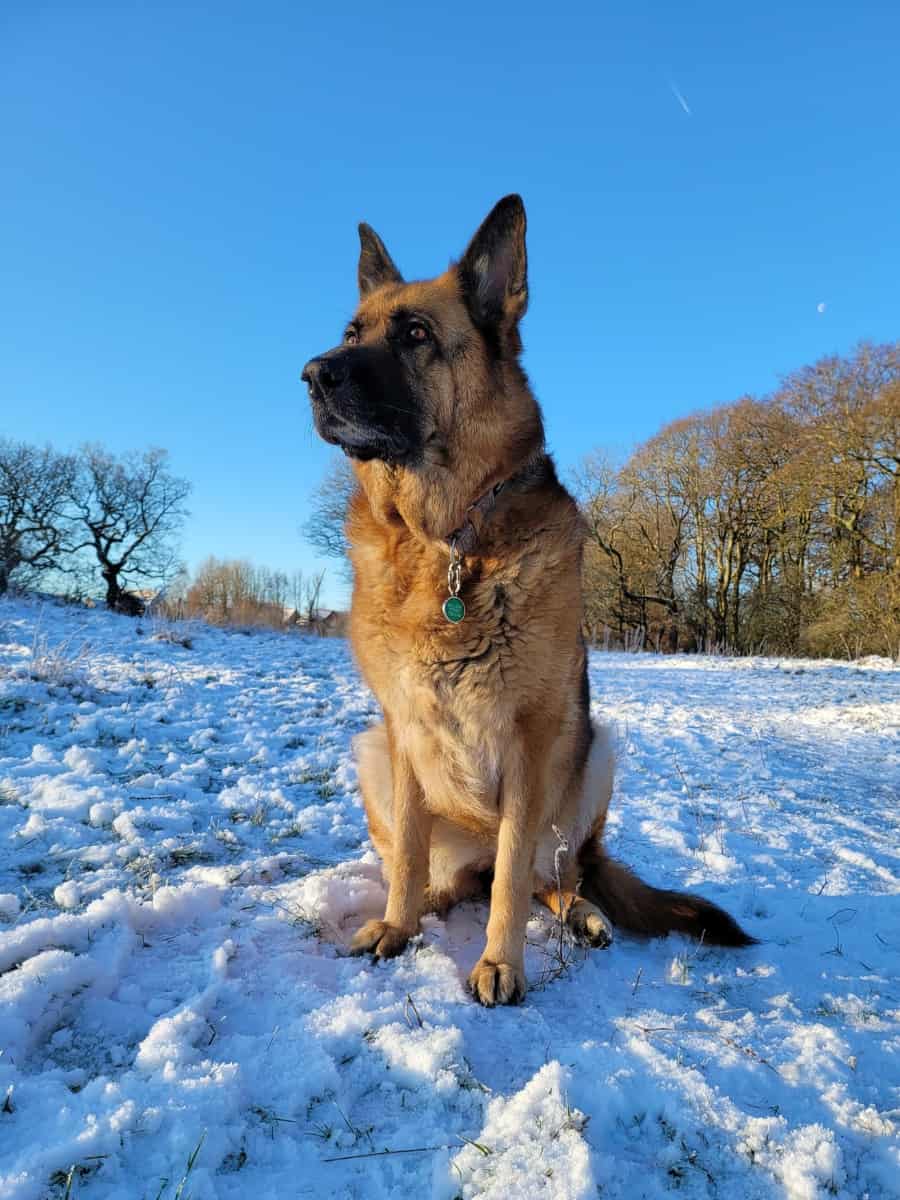
The imposing size of the Great Dane is an obvious sight for anyone. Although the German Shepherd is a large breed dog, he has to look up to see the face of his competitor.
For a dog owner, that difference means factoring in the space you have in your house and garden when deciding what dog breed to go for.
Besides, even though both dogs are friendly to different extents, a Great Dane is a more intimidating dog if you have small kids. See what more we say about that later.
Surprisingly, the largest German Shepherd is smaller than the smallest Great Dane in height and weight. The breeds are almost the same in body length.
Below are the figures that prove the Great Dane is a huge dog compared to the German Shepherd.
| Great Dane vs. German Shepherd Size Comparison | ||
| Great Dane | German Shepherd | |
| Height | 28-32 inches (71-81cm) | 22-26 inches (56-66cm) |
| Weight | 110-175lb (50-79kg) | 50-90lb (23-40.8kg) |
| Length | 35.5-43 inches (90-109cm) | 36-42.5 inches (91-108 cm) |
For both breeds, males grow taller, longer, and weightier.
Verdict:
Since our goal is to see who between the German Shepherd and Great Dane is good for you, we cannot conclude the Great Dane wins because it’s bigger. Owners who have the space for a Great Dane may choose him over a German Shepherd and vice versa. And that counts as a tie.
Looks
As much as we say every dog is cute, we must also say that a dog’s looks can appeal to one owner and not another, and that’s our worry, not theirs. What’s important here is realizing that we often consider a dog’s looks when we decide which one to bring home.
Luckily, both the Great Dane and the German Shepherd have great looks and will win the hearts of any prospective owners.
A core feature that accentuates a dog’s physical appearance is coat color.
For both breeds, some coat colors are more popular than others. For example, prospective owners widely seek the rare harlequin coat in Great Danes. The coat color presents in large black patches on a white coat background and results from a mutation gene.
Other common coat colors in Great Danes include black, blue, merle, mantle, white, and black & white.
As for the German Shepherd, black & tan and black & red are more common. The rarer GSD coat colors are sable, black, white, liver, and black.
If you fancy signature dog features, you might want to go for the German Shepherd for his unique erect ears. The Great Dane’s ears are floppy.
You might also want to choose the GSD for its unique way of standing and trotting, defined by the breed’s right angulation at the hind legs. The Great Dane stands erect on his muscular legs. Both can propel their bodies to run fast but count on the GSD to cross the finish line first.
Other interesting physical features of the two breeds are related to the coat type. The Great Dane has a smooth coat, and the German Shepherd has a medium-length coat. A word on grooming later will help you pick your preferred coat type.
Do you want to know all the pros and cons of owning a Great Dane? Then check out the below video…
Verdict:
The German Shepherd has a unique posture and trotting style, but the magnificent posture of the Great Dane has its appeal too. Both breeds have a range of beautiful coat colors. Anyone would be spoilt for choice. And that should count for another tie.
Personality
What constitutes a dog’s personality? Canine experts say dogs manifest five personality traits plus one superior-level trait, the last on the list:
- Playfulness
- Sociability
- Prey drive (Proneness to chase)
- Fearlessness (Curiosity)
- Aggressiveness
- Tendency to shyness or boldness
If we go by some of these traits, both the German Shepherd and the Great Dane are friendly dogs, showing absolute affection for family members and enjoying fun times with them.
As a difference, though, German Shepherds have a perfect score for patience and tolerance with children. You can train the Great Dane to accommodate children, but their large size can work against them.
While it is not rare to see a German Shepherd and Great Dane getting along, both breeds are only partially open to sharing their space with other dogs, especially those from other breeds. Of course, it’s all about early socialization, which is also true for how open both breeds are with strangers.
Be ready to stop your Great Dane from chasing any tiny creature that crosses his path. After all, Germans bred this guy to hunt. The German Shepherd is not any different, as you need to tame his prey drive.
Going by other more common traits, German Shepherds and Great Danes are protective and good guard dogs. They will confirm a stranger is harmless before letting them in. Besides, they are both loyal breeds who love the company and warmth of their family.
Verdict:
The German Shepherd and the Great Dane have a friendly personality and are extremely loyal to family. However, if you want an excellent dog around kids, go for the German Shepherd. And that could give the GSD an advantage over the Great Dane for an all-encompassing friendliness with family.
Trainability
You can two factors to gauge a dog’s trainability: intelligence and personality.
When it comes to dog intelligence and trainability, I like referring to “The Intelligence of Dogs,” the scientific work done by the Canine behaviorist Stanley Coren.
According to his findings, the smartest and most trainable dogs understand training commands quickly, before you even repeat them 5 times. What’s even better, they obey those commands 95 percent of the time.
If that’s the information you need to decide between the two breeds, the German Shepherd is your dog. If you go for Great Dane, be ready to repeat training commands 20-40 times and have them execute the cues only half of the time.
But I don’t like stopping there. Like humans, dogs learn behavior from an interaction of genetic and social factors.
For example, Great Danes are friendly, but they have an air of independence that you must maneuver around to convince them to “heel” when you need them to.
German Shepherds are the eager-to-please kind of learners, so they are easier to train. And, it seems, canine research has also come to the same conclusion: Herding dogs are better trainees than Hounds.
Verdict:
The German Shepherd is an extremely smart dog and will learn and follow commands easily. Great Danes tend to be self-willed and need more of your patience during training. The German Shepherd wins here!
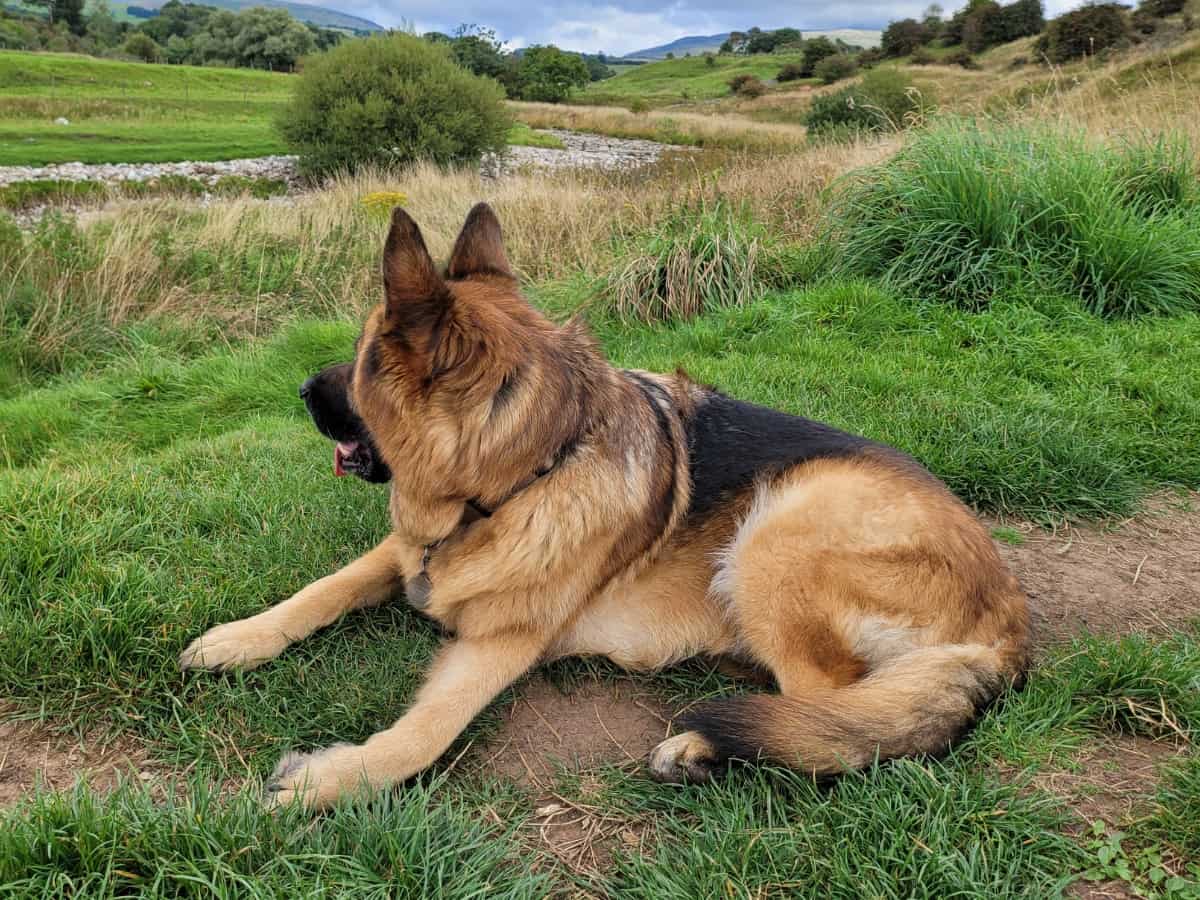
Care
Dog care touches several areas, including nutrition, exercise, and grooming.
Every dog needs a high-quality, healthy diet. As such, you need to feed your dog well, whether you go for the Great Dane or the German Shepherd.
Since both are high-energy dogs, a high-protein diet is good for keeping their bones strong and their general health sound.
Of course, you feed more food daily to a Great Dane than a German Shepherd. That’s because weight is a primary factor when determining the daily food amounts for a dog.
As for exercise, both the Great Dane and GSD need 1-2 hours of exercise daily. If you love the couch, none of these two breeds is for you.
Regarding grooming, both breeds are medium-maintenance dogs. The German Shepherd needs a quick coat brushing every couple of days for most of the year. The Great Dane even less.
However, both breeds molt twice annually before the hot and cold seasons. This can mean a lot more fur around your home; more in spring than autumn, and more from a German Shepherd’s medium-length coat than the Great Dane’s smooth coat.
Luckily, there are effective ways to deal with seasonal dog shedding. An occasional bath goes for both breeds.
Both the Great Danes and German Shepherds need regular nail clipping for comfort and better movement. Regular tooth brushing is also a good grooming practice for both.
Verdict:
Great Danes and German Shepherds have about the same grooming needs. However, you might need to brush the medium-length coat of a German Shepherd more regularly. For our verdict, the care factor counts as a tie because it will cost you more to feed a Great Dane than a German Shepherd.
If you watched the video above on the Great Dane’s pros and cons, it would only be fair to see the pros and cons of the mighty German Shepherd! So here goes…
Health and Lifespan
German Shepherds and Great Danes are generally healthy dog breeds. But like all dogs, they might come with genetic susceptibilities to some health conditions.
Among German Shepherds, musculoskeletal disorders are the primary killer. For Great Danes, a food-related condition is the primary cause of mortality: Bloat, also known as gastric dilatation-volvulus (GDV).
Besides, both breeds show proneness to these other health problems, some of which breeders should screen their dogs for before mating.
| German Shepherds | Great Danes |
| -Hip and elbow dysplasia -Degenerative myelopathy -Degenerative disc disease -Bloat –Exocrine pancreatic insufficiency -Diabetes -Cataracts | -Ear infections –Wobbler syndrome -Dilated cardiomyopathy -Hypothyroidism -Hip dysplasia –Happy tail syndrome -Eye infections |
| Recommended screening: -Hip Evaluation -Temperament Test -Elbow Evaluation | Recommended screening: -Hip Evaluation -Thyroid Evaluation -Cardiac Exam -Ophthalmologist Evaluation |
By working with a veterinarian, you can ensure that both German Shepherds and Great Danes have a complete lifespan. Both breeds have a 7 to 10-year life expectancy.
Verdict: Any of the dog breeds can suffer from the listed health conditions and have the same lifespan range. That’s another tie.
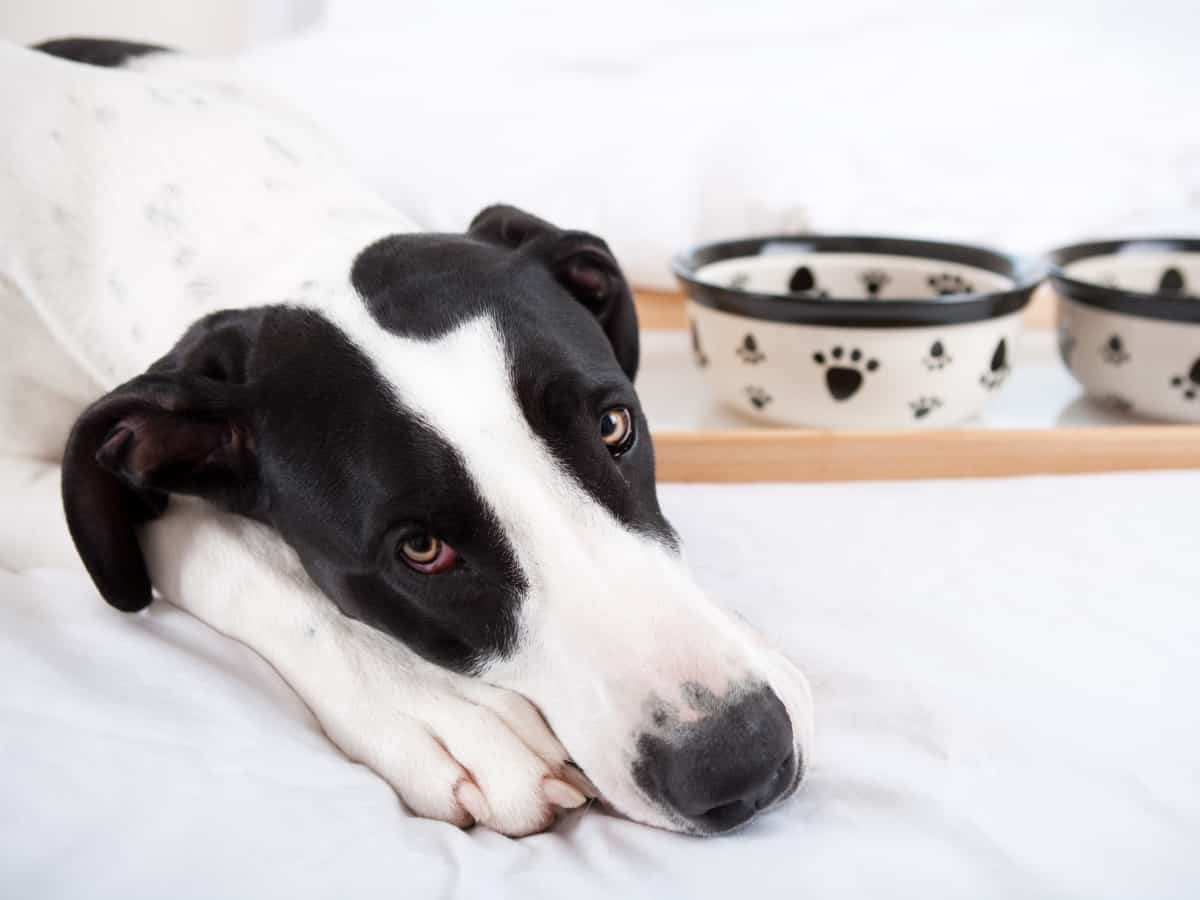
Final Verdict
German Shepherds and Great Danes are both excellent dogs. With their elegant looks to show for good breeding, choosing one over the other by physical features can be partial.
You will enjoy the loving, loyal, and protective nature of both Great Danes and German Shepherds. Although you need a little more patience to train the first, both are trainable dogs.
Be ready to provide high-quality food, vet care, and regular grooming, whether you go for the Shepherd or the Great Dane.
If you want peace of mind when your dog is around your kids, the German Shepherd is definitely your winner!
FAQs
What are the differences between the Great Dane and the German Shepherd?
Great Danes are one of the largest dog breeds in the world, while German Shepherds are a medium-sized breed. Great Danes are known for their gentle nature and calm demeanor, while GSDs are known for their high energy and protective instincts. When it comes to exercise, Great Danes require less activity than German Shepherds, making them a better fit for those who live in smaller spaces or have a more sedentary lifestyle.
Is the Great Dane or GSD more likely to get along with other pets?
Both Great Danes and German Shepherds can be trained to get along with other pets, but Great Danes may be more laid-back and less likely to chase smaller animals. German Shepherds may have a stronger prey drive and view smaller animals as potential prey, so early socialization and training are important.
Are Great Danes or German Shepherds more prone to separation anxiety?
Both Great Danes and German Shepherds can be prone to separation anxiety, but it may be more common in German Shepherds. This is because GSDs are known for their loyalty and attachment to their owners and may become anxious or distressed when separated from them. Great Danes, on the other hand, may be more independent.
Related Posts You May Like:





